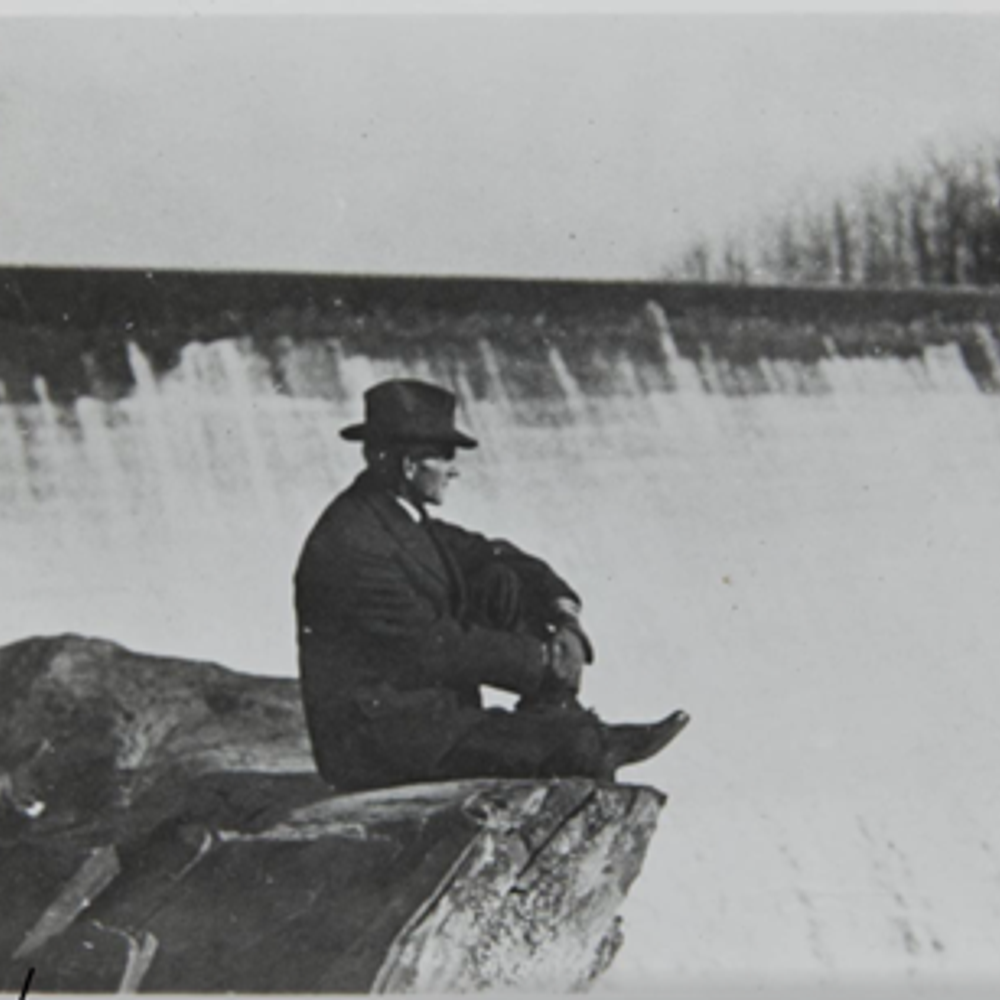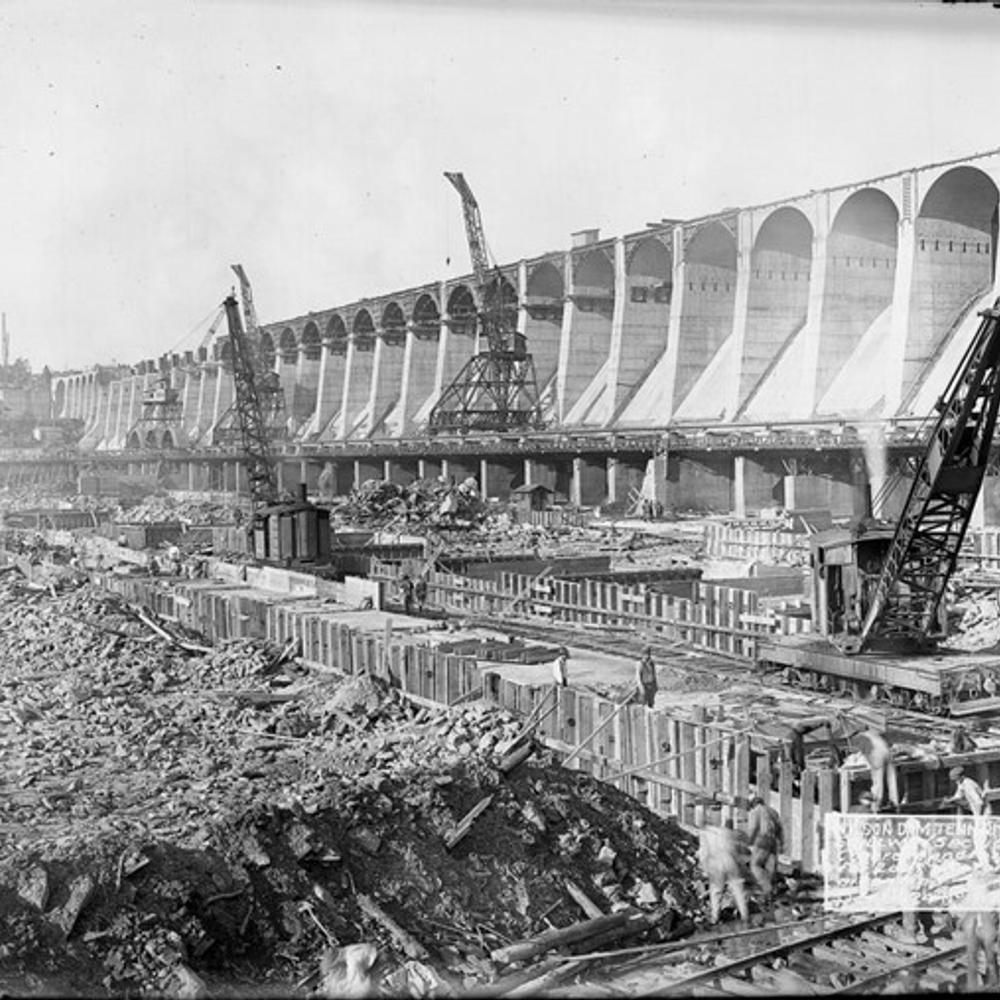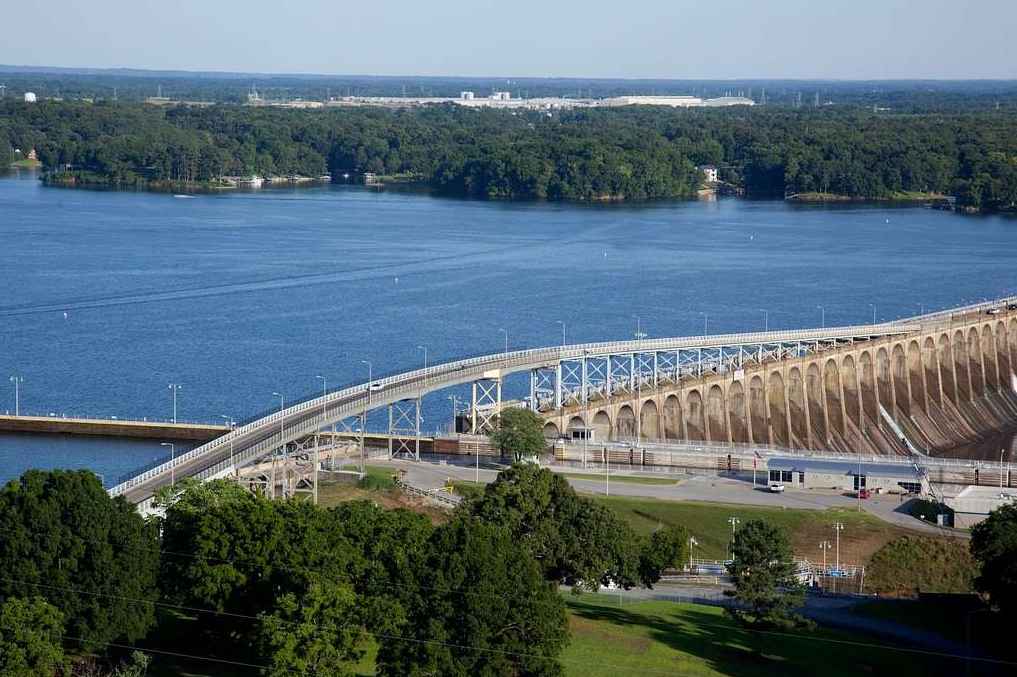When they were little, our kids knew that sign. “Ford City,” it said.
When they saw it, the are-we-finally-at-the-lake questions stopped, because they knew we had arrived – after a quick stop at the nearby Foodland for groceries … that just might include turkey hot dogs and a locally famous Anna Mary's seven-layer caramel cake, that is.
For the record, the lake I'm talking about isn't Smith, Guntersville, or Martin. It's Wilson Lake, where Muscle Shoals, music's hit recording capital of the world, is on one side and Florence is on the other.

Image Credit: Flickr-Jimmy Emerson, DVM, CC BY-NC-ND 2.0
The lake is more significant than a pond, but much smaller than the ocean. Dammed on either side, it’s terrific if you're serious about catching good, clean fish. And trust me, plenty of people are.
Still, why is a tiny town near Muscle Shoals named Ford City? It seems odd … unless you know about this part of Alabama's history.

Image from thehenryford.org.
Henry Ford “was planning to build a city ten times the size of Manhattan at a spot next door to Florence called Muscle Shoals,” Thomas Hager explains in his book “Electric City.” “This city of the future was going to combine the technological power of a city with the wholesome natural beauty of the country."
And so that “Ford City” sign stands as a testament, and perhaps a reminder, of what could have been:
“A city run on clean, renewable energy in the form of electricity generated by the river itself. He was going to build dozens of small factories and create jobs for a million workers. All the workers would have the chance to live on a few acres of land, in touch with nature and farming, growing much of their food.”
Henry Ford and his good friend Thomas Edison called it the “Detroit of the South."
But how did they become acquainted with the spit of land called Muscle Shoals?
Initially, it was because of World War I and the National Defense Act of 1916. The act "mandated the construction of two nitrate plants [to produce ammunition and explosives] powered by an adjacent hydroelectric plant to create a domestic supply of this vital resource. Federal Engineers decided on Muscle Shoals after determining that it had the greatest hydroelectric potential east of the Rocky Mountains.”

The construction of Wilson Dam was the largest hydroelectric installation in the world at the time of its building.
Except, construction stopped, which is when John Weeks, Warren G. Harding's secretary of war, got creative.
Instead of seeking government funding, Weeks looked for private investors to create the dam. Ford stepped up in 1921, offering 5 million to finish the dam and lease it for 99 years, while also constructing another dam upstream. He planned to turn the Muscle Shoals area into the "Detroit of the South."
In the end, Ford's plans didn't matter because George Norris, a Republican senator from Nebraska, thwarted them. According to Wikipedia, Norris thought “the dam would do more good in public hands than under Ford's ownership, and should be used as part of a large-scale public works program and development scheme across the Tennessee Valley.”
Was that the correct answer? To keep it in the government's hands? Or should they have given the private sector a shot?
And why was a Republican for a colossal government project? Perhaps it was because the government, even then, was a behemoth. What was one more big thing?
Or maybe even Republicans love pet projects. Yes, they do. Only now, their endeavors look less like building things and more like perpetuating war and sending money to anyone who asks. But I digress.
The dam was finished in 1924. George Norris got his way, and in May 1933 President Franklin D. Roosevelt signed a bill creating the Tennessee Valley Authority (TVA), an independent agency of the federal government charged with broad responsibility for the unified development of all the resources of the Tennessee Valley.
Thus, Wilson Dam remains in government hands.
To be sure, it is a marvel. And the work the TVA does is commendable.

But I can’t help wondering about that part of Alabama’s history, letting all the would-haves, could-haves, and should-haves roll around in my head.
Can you imagine if Sen. George Norris said yes, letting Henry Ford gain control of the dam?
Can you imagine if the business speculators, who’d snapped up plots of land and left behind sidewalks to nowhere, hadn’t disappeared?
Can you imagine what Muscle Shoals would look like now if the government chose not to step in the way of free enterprise and daring ideas, but instead decided to encourage them?
Amie Beth Shaver is a speaker, writer and media commentator. Her column appears every Wednesday in 1819 News. Shaver served on the Alabama GOP State Executive Committee, was a candidate for State House District 43 and spokeswoman for Allied Women.
The views and opinions expressed here are those of the author and do not necessarily reflect the policy or position of 1819 News. To comment, please send an email with your name and contact information to Commentary@1819News.com.
Don't miss out! Subscribe to our newsletter and get our top stories every weekday morning.










